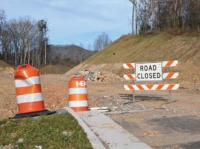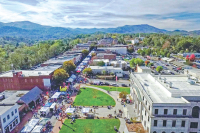Tragedy and the Ghost Dance’s demise
(Editor’s note: This is the second of a two-part series regarding the Cherokee Ghost Dance.)
A recent column focused on a so-called Ghost Dance movement that took place among the Cherokees in 1811-13. That, of course, was almost 80 years before the infamous era in the American West that culminated in the Indian massacre at Wounded Knee in 1890. The western Indians initially believed the dance would unite them with friends and relatives in the ghost world. As the movement spread from tribe to tribe, however, the dancers began to imagine that the dance would make them invincible.
The unity and fervor that the Ghost Dance movement inspired, however, only brought fear and hysteria to white settlers and contributed to the events ending in the massacre at Wounded Knee in 1890. When the smoke cleared and the gunfire ceased, more than 300 Sioux, some wearing ghost shirts, lay dead.
In the previous column I relied upon an essay titled “The Cherokee Ghost Dance Movement of 1811-1813” by William G. McLoughlin in the book The Cherokee Ghost Dance: Essays on the Southeastern Indians, 1789-1861 (Mercer University Press, 1984). McLoughlin’s essay is presented as an overview of the extant 19th century accounts of the movement. He treated the various episodes as part of an interrelated related “Ghost Dance” movement:
“In the troubled years 1811-1812 … a prophet named Charlie [i.e., Tsali, but not the individual involved in the Removal events of 1838] appeared among the Cherokee and described a dream or vision in which the Great Spirit … said he was angry with the Cherokees because they had departed from the customs and religious practices of their ancestors and were adopting the ways of the white man … Though Charlie met some opposition, he found many ready to accept his revelations, and he went on to say that it had been revealed to him that on a specific date, three months hence, a terrific wind and hailstorm would take place that would annihilate al the white men, all the cattle, and all the works of the white man … After the storm, these true believers would be able to return to their towns where they would find all of the deer, elk, buffalo, and the other game that had disappeared. Then they would live again as their ancestors did in the golden era before the white man came.”
There was no storm or eclipse. The Ghost Dance fervor withered and died without a return to a golden era.
Related Items
Michelene E. Pesantubbee is a professor of American Indian studies at the University of Iowa who specializes in Native American religious traditions. In “When the Earth Shakes: The Cherokee Prophecies of 1811-1812” American Indian Quarterly (1993), Pesanttubbee took a closer look at the evidence and concluded that there was no “Ghost Dance” movement per se among the Cherokees. Unlike McLaughlin, she also felt that the Cherokee incidents were, in part, fueled by rumors about the Shawnee movement led by Tecumseh. Even so, her descriptions of various incidents provide evidence of stress-related symptoms … dreams, visions, phophecies, and apopalyptic forecasts … in Cherokee society 35 years before forced removal took place:
[According to Charlie’s vision] the Cherokee were adopting the customs of the white people. They had mills, clothes, feather beds, and tables-worse still they had books and domestic cats! This was not good-therefore the buffalo and other game were disappearing. The Great Spirit was angry, and had withdrawn his protection. The nation must return to the customs of their fathers ... They must discard all the fashions of the whites, abandon the use of any communication with each other except by word of mouth, and give up their mills, their houses, and all the arts learned from the white people. He promised, that if they believed and obeyed, then would game again abound, the white man would disappear, and God would love his people. He urged them to paint themselves, to hold feasts, and to dance ...
[In] the next record of a prophecy …Big Bear, a Cherokee man, informed the missionaries of a vision another Cherokee man experienced in December 1811. According to Big Bear, this man and his sick children were in their house when: A tall man, clothed entirely in the foliage of trees, with a wreath of the same foliage on his head … said to him ... “I am not able to tell you now whether God will soon destroy the earth or not. God is not pleased that the Indians have sold so much land to the white people. Tugalo [along the GA-SC border], which is now possessed by white people, is the first place that God created. There in a hill he placed the first fire, for all fire comes from God. Now the white people have built a house on that hill. They should abandon the place; on that hill there should be grass growing, only then will there be peace.”
The third pattern of prophecies was apocalyptic. It began in 1812 after the appearance of a comet and a series of earthquakes. The Moravian records contain three entries describing apocalyptic predictions. On February 23, 1812, the missionaries wrote that David McNair, an intermarried white, told them about the stories he had heard. Later in the entry, the missionaries wrote about an incident in which the residents of one town fled into the hills to hide from a storm of hailstones, the size of half bushels, that were to fall on a certain day. That day passed without incident and the people returned to their homes. A March 1 account came from Laughing Molly, an elderly Cherokee woman, who heard that a sorcerer predicted that in three months the moon would become dark and afterwards hailstones as large as hominy blocks would fall, all the cattle would die, and the earth would come to an end.
George Ellison wrote the biographical introductions for the reissues of two Appalachian classics: Horace Kephart’s Our Southern Highlanders and James Mooney’s History, Myths, and Sacred Formulas of the Cherokees. In June 2005, a selection of his Back Then columns was published by The History Press in Charleston as Mountain Passages: Natural and Cultural History of Western North Carolina and the Great Smoky Mountains. Readers can contact him at P.O. Box 1262, Bryson City, N.C., 28713, or at This email address is being protected from spambots. You need JavaScript enabled to view it..









